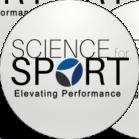P E R F O R M A N C E


Study Details



Study Details
Prac�cal Takeaways from study


Related links to learn more about the topic
Reviewers comments on the st udy
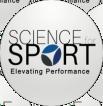


James is currently the Head Strength & Conditioning Coach for the Romanian Rugby Union. He has previously worked in America's professional rugby competition Major League Rugby with Austin Elite and the NZ Women’s National Rugby League Team. He is a published author and has completed a MSc in Sport & Exercise Science from AUT, Auckland, NZ.

Technology & Monitoring
Cody is a strength and conditioning coach and adjunct lecturer at the University of Iowa. He has an MSE in Exercise Science from the University of Kansas and also holds a CSCS from the NSCA.
Tom is the Head of Athletic Development at St Peters RC High School. He holds a Masters in S&C and has previously worked with West Bromwich Albion FC, Gloucester Rugby club, and Great Britain Equine. Tom is our youth research reviewer at Science for Sport.


Nutrition
James is a Performance Nutritionist for the English Football Association and works alongside the England national teams (men's and women's). He is also a SENr registered performance nutritionist and holds a PhD from Liverpool John Moores University.

Fatigue & Recovery
Matthew is a Physical Therapist and the Clinical Director at a private Physical Therapy clinic in NYC. He has a special interest in the treatment of lower extremity/foot and ankle injuries along with helping runners and walkers to get back to what they love to do.



Tom is currently an assistant professor in applied sports sciences and has worked in elite sport for over 10 years. Previous roles include working as a sports scientist at Liverpool FC, where he completed his PhD, and working across a number of other sports. He is passionate about physiology and has published papers on strength and conditioning, nutrition and youth development





Preseason training, from a physical perspective, is aimed at improving qualities including fitness, power and speed looking forward with the competitive season in mind. Preseason allows for a period of temporary overload compared with the regular season where tactical and technical considerations are increased. Monitoring throughout this period of overload is important to avoid overtraining, which can manifest both physically and mentally
Measurement of training load is challenging as there are no set parameters to follow This leads to surrogate measures being used that reflect the biological systems impacted by the training. Typically, these include the neuromuscular, musculoskeletal, endocrine, metabolic, cardiorespiratory system and athlete-reported questionnaires measuring constructs such as recovery, stress, fatigue, and soreness.
The aim of this study was to better understand the responsiveness of commonly used measurement instruments to a typical preseason period including a short term training camp in high-level youth soccer players.

Monitoring of the period was carried out in 14 U15 (14.3 ± 0.3 yrs) male soccer players of 1 German professional youth academy. Players provided data 3 days prior to (D − 3), during (D2−D4), and 1 (D + 1) and 4 days (D + 4) after the camp. These included 4 items for the Short Recovery and Stress Scale (SRSS), a countermovement jump (CMJ), and a submaximal run to assess exercise heart rate and heartrate recovery
The SRSS consists of 4 items for the Short Recovery Scale (i.e., physical performance capability, mental performance capability, emotional balance, overall recovery, and the short stress scale (i.e., muscular stress, lack of activation, negative emotional state, and overall stress). For each item, a sentence was provided to describe the respective item complementing the 4 descriptive adjectives. Each item was rated on a 7-point Likert scale with single-point increments, ranging from does not apply at all to fully applies.
Training load during the camp followed an alternating low–high pattern, with lower training loads on D1 and D3 and higher training loads on D2 and D4 and was measured via GPS.
This study suggests that simple, cost-effective, and non-invasive athlete-reported parameters such as items related to the Physical Performance Capability, Emotional Balance, and Overall Recovery, as well as Muscular Stress and Overall Stress of the SRSS and a submaximal run to assess heart rate responses can be used to monitor constructs such as recovery and stress and cardiorespiratory responses to load during and after a period of increased training load.
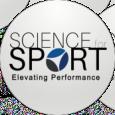
Practitioners may therefore consider using such indicators to help make informed decisions on programming adequate recovery and adjusting subsequent training loads for their players. In the context of this study, parameters derived from a CMJ, however, added little value, which is interesting to note.
Want to learn more? Then check the se out...
Changes in SRSS physical performance capability, emotional balance, overall recovery, muscular stress, and overall stress were small to moderate on D3 and moderate to large on D + 1, while changes were trivial on D + 4.
Some CMJ parameters related to the eccentric phase were slightly improved on D3, and these parameters were slightly impaired on D4. Changes in CMJ parameters were trivial on D + 1 and D + 4.
After a moderate decrease in exercise heart rate on D3, there was a small decrease on D + 4 and a moderate increase in heart-rate recovery

“I feel that this study is useful as it contributes to our understanding of the responsiveness of commonly used tests when considering load changes during a short training camp, such as may be seen during preseason. Specifically, it was useful to see that changes in athlete-reported recovery and stress scales and heart rate responses during the submaximal run were observed in temporal relation to changes in training load during the camp.”
“Only trivial to small changes in CMJ parameters were seen suggesting it may have limited responsiveness in detecting meaningful responses to load. This is interesting as I feel it is a relatively widely used tool for such tasks.”
“It was also interesting to see that following a 3-day break, players were fully recovered and showed small-to-moderate improvements in cardiorespiratory fitness. The authors noted that these benefits may differ if the camp were organised differently, which should be kept in mind when using this information with your own players.”


Coach leadership is seen as crucial in sports teams, affecting team cohesion, athlete performance as well as being positively related to team potency. Initially, it was considered ‘a behavioural process used to increase athlete performance and satisfaction’, an idea developed to now include that it is a behavioural and interpersonal influencing process impacting a broader range of outcomes.

As a whole, this idea has grown in complexity and is now broken down by researchers into many dimensions and sub-dimensions. This study looked to consider the association between the coach-athlete relationship (CAR) and coach leadership by examining these sub-dimensions while also considering gender effect.
A total of 213 athletes from both individual and team sports (e.g., Athletics, Aikido, Archery, Basketball, Cricket, Handball, Rugby, Table Tennis and Volleyball) participated in this study. Participants included 122 male athletes and 91 female athletes (age 28.25 ± 2.62 yrs). Participating athletes were coached by a larger number of male (n = 158) than female (n = 55) coaches.
Coach leadership – the Transformational Leadership Inventory (TLI), which has been previously validated in sport was used. It measured six dimensions of transformational leadership:
Articulating a Vision (five items; e.g., ‘my coach is always seeking new opportunities for the team or squad’), Providing an Appropriate Model (three items; e.g., ‘my coach provides a good model to follow’), Fostering the Acceptance of Group Goals (FAGG; four items; e.g., ‘my coach fosters collaboration among work groups’), High Performance Expectations (HPE; three items; e.g., ‘my coach insists on only the best performance’), Individualised Support (IS; four items; e.g., ‘my coach shows respect for my personal feelings’) and Intellectual Stimulation (three items; e.g., ‘my coach has provided me with new ways of looking at things which used be to a puzzle for me’.). The response scale ranged from strongly disagree (1) to strongly agree (7).

Coach-athlete relationship - The CART-Q14 was used to measure the overall quality of relationship between coaches and athletes categorised as direct and meta-perspective: Direct Closeness (four items; e.g., ‘I like my coach’), Direct Commitment (three items; e.g., ‘I am committed to my coach’) and Direct Complementarity (four items; e.g., ‘When I am coached by my coach, I am responsive to her/his efforts’), as well as Meta Closeness (four items; e.g., ‘My coach likes me’), Meta Commitment (three items; e.g., ‘My coach is committed to me’) and Meta Complementarity (four items; e.g., ‘My coach is responsive to my efforts when she/he coaches me’). The response scale ranged from strongly disagree (1) to strongly agree (7).
On the day of the visit, participants received guidance and completed the questionnaires after training in the sports venue, while coaches were in a different space from the athletes. Participants choose to fill out the questionnaire on paper (n = 162) or online (n = 51) at their own preference. Athletes volunteered their time to the study and consented to participate in this study by initialising written information and a consent form. Relationships in the data were looked for using a type of correlation analysis known as canonical correlation analysis (CCA).
The study also endeavoured to uncover the different patterns of different gender combinations by further dividing the participants into eight sub-groups such as, male athletes, athletes with male coaches, female athletes with male coaches etc.

Results for all athletes - Two significant results were found. Fostering the Acceptance of Group Goals (FAGG) was seen to not significantly contribute to the correlation analysis model. IS behaviours were negatively associated with the Direct and positively associated with High Performance Expectations (HPE).

Female athletes - It was seen that High Performance Expectations (HPE) and Fostering the Acceptance of Group Goals (FAGG) did not significantly contribute to the correlation analysis model.
Female athletes with male coach group - It was found that High Performance Expectations (HPE) and Individualised Support (IS) did not significantly contribute to the correlation analysis model.
Athletes with male coach group - All variables in leadership set and CAR set positively related to each other except it was indicated that High Performance Expectations (HPE) did not significantly contribute to the correlation analysis model.
The association between coach leadership and CAR is complex. Beyond this point this study also suggests that gender is a factor leading to unique patterns of associations between the two concepts, which can increase complexity further
This study provided statistical evidence revealing the potentially multidirectional relationships between coach transformational leadership and CAR. Although CAR and coach leadership play significant roles, their roles are distinct in coaching effectiveness. More research is warranted to fully understand the interplay between these two concepts and outcomes that go beyond athletes, such as organisational culture, team environment and coach effectiveness (e.g., efficacy, competency, burnout).
A clear distinction and exploration of the concepts of coach leadership and CAR would provide a more coherent and a less ambiguous conceptualisation of effective coaching. A deeper understanding of the interactions between coach leadership and CAR by gender is more likely to contribute to better coaching practices in the future.
“This paper can seem a little complicated to pick out the relevant details due to using statistical methods we may be less familiar with than usual. In short though the relevant points here were that despite backing up some previously held beliefs this study also provided evidence of the potential detrimental effect of coach leadership on quality CAR or the negative associations between the two concepts.”
“We are all well aware of the importance of rapport when working with athletes. In my mind this paper reminds us that the intricacies behind achieving good rapport are vast. When working with our own athletes this is important to keep in mind to ensure that while we wait for further research we are building functioning relationships that enable us to best optimise the progress of those we work with.”
This month ’ s top research in strength & conditioning.
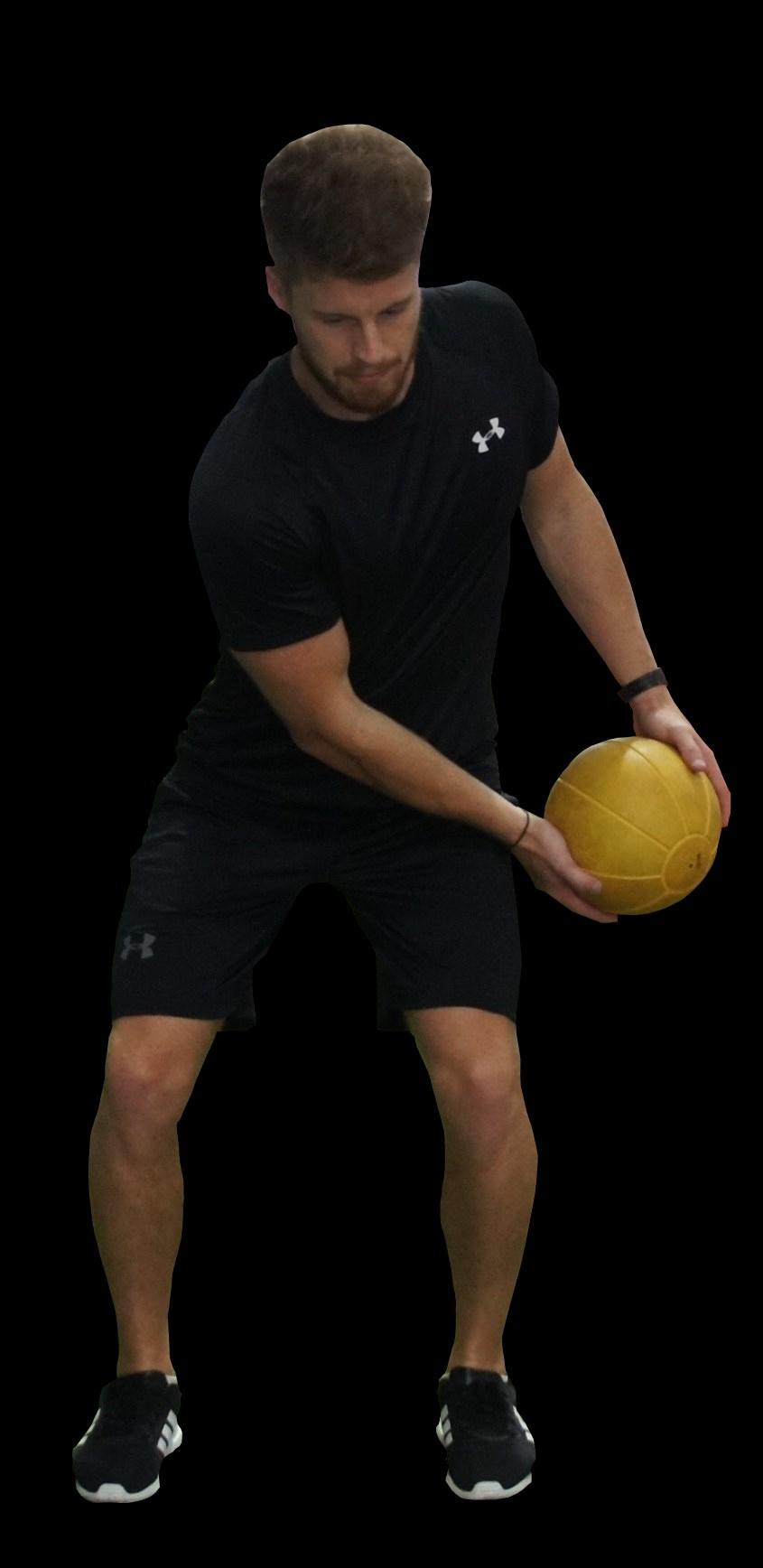

H OW D O E S P RIM IN G U S IN G VA RYIN G RE S IST E D S P RIN TS IM PA C T S P RIN T P
S H O U L D YO U A D D W E IG H T O R RE P S IN C RE A S E VO LU M E LOA D F O R H YP E
IS F LYW H E E L T RA IN IN G S U P E RIO R T T RA D IT IO N A L RE S ISTA N C E T RA IN IN G
N E U RO M U S C U L A R P E RF O RM A N C E I
H O C KE Y P L AYE RS ?




It is without question that the ability to accelerate and sprint is advantageous to most sports. As such, during a warm up it is typical for activities to consider this and build intensity to allow for explosive performance during competition. In recent years, beyond a traditional warm up, the effect of post-activation potentiation (PAP) has been sought to be used to further this. PAP refers to acute enhancement in muscular performance induced by recent maximal, or near maximal muscular contraction.

It has been shown though that the half-life of PAP is around 28 secs, which suggests that any carryover into competition may be the result of phenomena other than specifically PAP. Despite this, the term post-activation potentiation enhancement (PAPE) has been given to such improvements following warm ups that improve explosive performance.
Investigations into PAPE for unresisted sprint (URS) performance have provided variable results. Often, where limited or negative effects are shown researchers suggest this may be that the conditioning activity (CA) used may not have sufficient carryover to instigate PAPE (such as using a squat preceding URS).
Therefore, resisted sled sprinting (RSS), an exercise modality involving sprint efforts while towing a weighted sled device, may be efficacious as a CA by providing a mechanical overload, while performing a movement that is biomechanically similar to sprinting.
The present study investigated whether using RSS as a CA could induce a PAPE of URS performance over 10 and 20 m in team sport athletes, and whether effects differed between male and female athletes, given the paucity of research on RSS as a CA in female athletes.
28 team field sport athletes who were competing at national and/or international level in their respective sports participated in this study The sample consisted of 15 male athletes (2 field hockey, 8 soccer, 5 rugby union) and 13 female athletes (3, field hockey, 9 soccer, 1 Gaelic football).
After a standardised warm-up, URS performance was measured over 10- and 20-m (PRE) followed by a CA consisting of 3 x 20 m RSS. Unresisted sprint performance was then measured again at 30 seconds and 4, 8, 12, 16, 20, and 24 minutes after CA. The effect of heavy (H-RSS) or very heavy (VH-RSS) sled loads (which targeted a decrement in sprint velocity from URS (Vdec) of 20% and 60%, respectively) were compared during 2 separate visits using a randomised crossover design.
Both H-RSS and VH-RSS loads were close to meeting their desired speed reduction corresponding to a Vdec of 17.3 ± 3.6% and 52.9 ± 3.8%, respectively. Crucially, URS performance after CA was found to be slower than PRE over both 10- and 20-m.
Reduction in URS performance over 20-m was greater in VH-RSS. However, after individually looking at the fastest sprint times after CA, the best time for 10-m improved after H-RSS by 0.026 seconds but not after VH-RSS. The fastest sprint times for 20-m were similar to PRE after H-RSS and VH-RSS. No sex-specific differences were observed.
As is often the case with such research a high inter-subject variability in the response to using RSS was found. This was the case for both magnitude of improvement, and for the time point at which the fastest sprint occurred. This means that there remains questionable practical value to an RSS-based CA as a means to induce a PAPE for URS performance.
When the fastest URS times post-CA were extracted, an improvement in 10-m URS was observed after H-RSS (small effect) but not after VH- RSS, and no improvement in 20-m URS was observed after either H-RSS or VH-RSS. This suggests that there may be some benefit to using RSS in more capable individuals. However, the PAPE for URS was highly variable across subjects with no evidence of an “optimal” time point at which the improvement in URS occurred nor were any sex-specific differences observed.
If practitioners wish to explore the use of RSS, the prescription for the CA should be considered and established on an athlete-by-athlete basis. Even so, this effect is likely to be only beneficial for inducing responses in training, rather than in competition when specifically considering the relevance to team field sport athletes given the repeated sprint demands and overall duration of performance in these sports.

“Unfortunately, the present study adds to the mixed results of the RSS for PAPE literature. Although there was a small improvement in some individuals, as less than half of the participants improved performance beyond a practically meaningful magnitude, the high degree of variability between subjects in the magnitude of improvement, and the period at which the fastest sprint occurred being highly variable, questions remain regarding the practical value of RSS as a means to induce a PAPE.”
“As is often the case if you’re interested in using such techniques you should trial it responsibly with your athletes and monitor their individual responses. Beyond this, practitioners should keep in mind that responses are likely to vary with training age, fitness, and athlete readiness. The authors also proposed that with the potential practical challenges of using RSS on an individualised basis in a team sport environment, sprint overload using wearable resistance loading may also be worthy of consideration, which I feel could be a good option.”





Previous research has demonstrated the doserelationship between volume as measured by number of sets per week and hypertrophy (see ). Essentially, HERE volume is accumulated over time. However, the nature of the volume progression (e.g. increasing reps or load) also influences hypertrophy. But it remains unclear how different volume progressions affect changes in strength and hypertrophy As such, this study compared two volume progressions models on strength and muscle cross sectional area (CSA).
This study was a secondary analysis of data from two other studies (14 untrained male subjects from study 1 and 10 untrained male subjects from study 2 (age = 24 ± 5 yr)). Study 1 involved the first volume progression model of high-intensity resistance to failure at 80% 1RM of unilateral leg extension to concentric failure. After 12 sessions, load was adjusted based on 1RM reassessment. This group was labelled the %1RM group.
Study 2 used the same exercise but provided a rep range of 9 to 12. Load was adjusted set by set if reps fell outside the range when lifting to failure. This group was labelled the RM Zone group. Both groups did 24 training sessions with each session consisting of 3 sets. Study 1 trained twice a week while study 2 trained three times per week.
Before and after the intervention, unilateral 1RM leg extension and muscle CSA of the vastus lateralis through ultrasound was measured. Volume load progression was calculated as the percentage change from the first session (how much volume increased from first session to last). Accumulated volume was calculated for every session (sets x reps x load).

Taking this study at face value, increasing load while staying within a rep range is superior to increasing reps to failure at the same load when aiming to cause hypertrophy. Likely due to the greater change in volume over time and the trend to higher accumulated volumes.
If your main goal is muscle growth, you’re likely better off increasing load within a prescribed rep range than increasing reps over time. For example:
§ Week 1: 3 x 9-12 @80% 1RM
§ Week 2: 3 x 9-12 @80% 1RM
§ Week 3: 3 x 9-12 @83% 1RM
§ Week 4: 3 x 9-12 @83% 1RM
If you’re working with individual athletes, you can adjust loads as needed based on day-today performance. However, be aware that this study had subjects train to failure. Whether you see similar results with non-failure training is up for debate. However, it has been shown that you can stray further from failure with large compound lifts (e.g. squat) and see meaningful gains in hypertrophy (see Therefore, you may run a similar volume load HERE) progression model but 2-3 reps short of failure. That way, you still get the benefits of increasing volume without the potentially crippling fatigue.

No significant differences were found between groups at baseline for any variables. Significant relationships were found between volume load progression, 1RM (R2 = 0.26) and CSA (R2 = 0.24). However, no significant relationship was found between accumulated volume and these measures.
No significant differences were found in volume accumulation between groups but there was a trend towards the RM Zone group for higher volume. No significant differences were found in 1RM change between groups with a trend leaning towards the RM Zone group. CSA increase was significantly greater in RM Zone (16 ± 4.02%) vs. %1RM (7.86 ± 4%) group.
“It’s important to understand the limitations of this study. Firstly, it was done through secondary data analysis so the study wasn’t designed for the particular problem. There was also a difference in training frequency with one group training 2 and the other 3 times per week. While changes in strength and muscle size don’t differ when volume is matched between 2 or 3 times per week training, there was a trend to the RM Zone group performing more volume overall.”
“Further, it was performed in a condensed time frame compared with study 1. These issues could both affect the outcome. Finally, this was a single exercise and extrapolating this type of training to an entire training session of exercises may lead to sub-optimal training due to excessive fatigue.”
“Overall, effective volume is the driver of hypertrophy. How you increase and cycle volume will depend on the individual. If athletic performance needs to be maintained, you may look to increase load vs. increasing reps and sets. If purely physique goals, then increasing volume through sets and reps might be a better option.”



Maximizing performance for ice hockey requires physical preparation off-ice. One method to do this is through using flywheel resistance training. Flywheels differ from traditional weight training as the energy generated during the concentric phase dictates the energy returned during the eccentric phase where they are equal.

Delaying the eccentric braking action achieves eccentric overload at long muscle lengths, which is not possible during traditional resistance training. Currently, there is little research comparing flywheel training and traditional weight training in elite athletic populations. Therefore, this study aimed to investigate the effects of flywheel training on important physical attributes related to elite ice hockey performance.
Eighteen elite Finnish U20 male ice hockey players (age = 17-21 yr) were split into a flywheel (FG) or traditional weight training group (TG). No subjects were familiar with flywheel training but had several years of strength training experience. Subjects performed an 8-week training intervention with the FG performing a squat, single leg lateral squat, lying leg curl, and seated leg press with flywheel devices. The TG performed the back squat, power clean, pistol squat, and walking lunge. For a full program breakdown and exercise pictures, see HERE
Pre and post intervention, the following tests were conducted: countermovement jump (CMJ) on an infrared light mat with bodyweight, 20- and 40 kg; change of direction (COD) test and anaerobic sprint performance using a 20m shuttle run for 200m total recorded with timing lights; average and peak power output measured on the flywheel device using a power encoder with the squat at 0.05 kg·m2 which is one medium sized flywheel. Differences between groups were analysed.


This study suggests similar performance changes are derived from flywheel and traditional weight training. Which means there is a time and place for both modalities depending on the training adaptations you’re trying to achieve. For example, here are some advantages of using flywheel technology:
§ Exercises can be direction specific. For example, the single leg squat used in this study was similar to a lateral lunge with the direction of resistance being 45° from the ground. If on-ice performance tests were performed, potentially this would’ve shown better transfer than axially loaded barbell exercises.
§ You can remove one size fits all loading strategies. By this, I mean loading with the barbell on the back or shoulders. Some athletes find these positions uncomfortable and injuries prevent them from getting into these positions. Flywheel devices can be strapped around the waist like a belt squat to overload the legs.
§ Accessible eccentric overload. Eccentric overload with traditional weight training typically requires partners to spot and potentially dangerous loads above 1RM only making them suitable for more advanced athletes. Flywheels allow a safer alternative for eccentric overload. Further, some brands have a built-in eccentric motor to apply greater energy during the eccentric phase like Exerfly (see HERE).
There are many ways to incorporate flywheel training within an athletic performance program. Taking the squat for example, you can load more flywheels for a strength emphasis, and less flywheels for a speed and power emphasis. You can choose to delay the braking action to overload eccentrically at long muscle lengths or look to produce as much concentric effort as possible.
Both groups showed similar improvements in CMJ at all loads, COD and anaerobic sprint test for all splits and total time. However, the FG displayed significantly greater average and peak power output from pre to post intervention compared to the TG.
“One interesting application of the flywheel is the ballistic nature of the force-time curve. I linked John Cronin s post about this in the link below. During traditional weight training, there is a long deceleration phase. This is why accommodating resistance became and still is popular within athletic performance to allow the athlete to accelerate throughout the entire range of motion. Flywheels have similar characteristics, which may transfer better to sport.”
“Another consideration is that the groups didn’t perform the same exercises. Instead of the TG group performing the traditional strength versions of the flywheel exercises, they used different exercises altogether.”
“Finally, regarding the results of this study, the larger increase in power output from the FG group should be taken with a grain of salt. No subject was familiar with flywheel training so by the law of specificity, the FG would be expected to enhance performance in an exercise they were performing for 8-weeks compared to a group that wasn’t.”
This month ’ s top research on technology and monitoring.


In order to properly prepare athletes for the intensity of competition, coaches can use (among other things) the acceleration and deceleration data gained from wearable devices to specifically quantify the highest levels of activity experienced during a match. One method for calculating this is to average out the changes in movement velocity (accelerations and decelerations) for a given period of time (e.g. during 1-min of play), providing coaches with the maximal mean values for these high-intensity actions (see ). This strategy HERE provides a more reliable (see ) and valid (see ) HERE HERE representation of the intensity of a given activity (e.g. match, small-sided game, or practice drill). Ultimately this allows coaches to prescribe training that compares with competition demands based on the intensity of movements.
The Women’s Australian Football League (AFLW) began in 2017 and expanded to ten teams in 2019. Therefore, the popularity and level of competition is rapidly increasing (see HERE). Although competition demands have been examined (see HERE), the maximal mean acceleration demands for AFLW have not yet been researched. Therefore, the objective of this study was to quantify the speed and acceleration maximal mean values for 1- and 10-min durations during AFLW matchplay
Twenty-eight AFLW athletes (age 24.1±4.9-yrs) from the same team participated in this research. Match data from six matches during the 2020 season provided movement data (e.g. durations, accelerations, and velocities) using global positioning system wearable devices (see ). Athletes were HERE categorised into three groups based on position, hybrid (mobile forward and mobile back, n=9), mid-wing (midfielders, n=12), and tall (tall backs, tall forwards, and rucks, n=7).
Deceleration data for each athlete was converted to positive values and combined with other acceleration data to represent high-intensity activity. Moving averages across 1- and 10-min time-windows were taken for the combined acceleration and deceleration data. Further, the maximal average period was noted for each game. The speed and change of direction data was summarised by group, analysed, and presented to help coaches better understand the most intense periods. Lastly, to better understand power endurance (or the decay of maximal intensity), researchers examined a longer (10-min) window of time during competition.



Although there was a variation in volume and intensity when comparing matches and players, coaches should use these mean values to gain a generalised understanding of demands (respecting the range or standard deviation), as well as the position-specific values related to distances, speeds, and acceleration loads. This insight provides coaches with a starting point for training loads in the offseason and pre-season periods to adequately prepare athletes for competition.
§ Further, coaches should use the maximum intensities (e.g. speeds, and rate of movement per minute) and volumes (e.g. distances gained from competition data (i.e. the ‘worst case scenario,’ see ) to identify the highest standard of performance. Coaches can use these values to HERE promote athletes' development and preparation. These values can serve as standards to progress to during the pre-season period to ensure that an athlete is adequately prepared for the greatest demands of the sport. The reason for this is to ensure that the demands of competition are not a novel stimulus, as this threatens the ability to recover and increases injury risk.

For intermittent team sports (e.g. soccer, football, rugby, basketball, Australian football) that require bouts of high-intensity activity with the execution of technical and tactical abilities, coaches should examine the volume, intensity (speed), and rate at which accelerations and decelerations occur to quantify the demands and provide a target for developing performance potential and sufficient preparation for competition demands. These values can be used to design comparable drills, smallsided games, and necessary loads in training.
§ Further, data from matches can be examined in 1- to 10-min rolling averages to best understand a playing segment of competition before time stoppage, lower intensity, or rest. With this value, coaches can better understand how long these drills or small-sided games should run in a training session to accurately mimic competition demands.
§ It is important to recognise that in order to develop high-quality (maximal ability), coaches should segment drills and practices appropriately to allow necessary rest and full speed sport-specific actions in training.
Compared to previous data (see ) taken during the HERE inaugural 2017 season, the intensity of activity during match-play increased, noting the improvements of performance for athletes in the league in recent years. Given the defensive role of a tall back and the explosive actions required, acceleration and acceleration load was highest for this position during competition.
Similar to previous findings (see ) and common for all HERE movement metrics, there was a large variation between both matches and individuals across the six matches studied.

For 1-min window, 205-m.min-1 was the greatest maximal average speed, but that declined to 124-m.min-1 when examining the 10-min window
For acceleration, the highest 1-min average window was 0.7-m.s-2, and 0.43-m.s-2 for the highest 10-min value.

“The purpose of this study reminds me of the power and endurance potential that coaches are aiming to develop in athletes they work with. The results of competition are determined by an athlete s sportspecific technical mastery and their sport specific work capacity This ‘capacity’ involves both a maximal ability (e.g. speed, power, force production), as well as the ‘capacity’ to endure and sustain activity during the competition.”
“Therefore, when designing training, coaches should aim to target general speed and strength development in the off-season period, but as the pre- to inseason period approaches the training can shift to more specific and longer duration activities. By doing this, athletes are able to develop their maximal potential and then prepare for the volumes and rates of sport-specific play All of these target volumes can be gained from research like this, and coaches should lean on this data when making decisions about their planning and dosing of training sessions.”


With the use of global positioning systems (GPS) and triaxial accelerometer technology, coaches are able to measure the running characteristics (e.g. distances, speeds) and even changes of direction or g-forces (G) that are experienced during deceleration and collisions. This can be especially useful for a sport like rugby union (RU) that involves frequent contacts with opponents (e.g. tackles, rucks, mauls, or scrums). These contacts are vital for success in RU, but can be deleterious for athletes during a match (see and ). HERE HERE
However, the relationship between collisions and running have not been analysed in RU, which would help coaches identify match- and position-specific demands. Therefore, the purpose of this study was to better understand collisions and running during RU competition, specifically examining peak periods and rolling averages (of impacts and movement) to identify their relationship with each other during a match.
One-hundred sixty male RU players from four Australian Super Rugby teams participated in this body of research, comparing data from 95 games during the 2018 and 2019 seasons. Five positions were examined (front row, lock, back row, inside back, and outside backs). Rate of distance covered (m.min-1) and frequency of ‘impacts’ or collisions, which were tagged as an event that exceeded 5-G, were collected using athlete-worn microtechnology devices (10-Hz GPS unit with 100-Hz triaxial accelerometer).
Data was examined as a rolling average across 1- to 10-min windows to identify peak periods of running and collisions. The entire game, peak window (highest value), and per half (first half only) for both relative running distance and rate of impacts was noted for each player, across every game. Researchers presented data based on position and the interaction between relative rate of running distance and collisions.
Positive relationship between the number of impacts in a game and total distance covered (i.e. when athletes accumulated a greater total distance, there were more total number of impacts).
During 1-min rolling windows, generally greater running activity (distance or speed) occured when there were less impacts.
§ However, when examining windows of 5- to 10-min of peak running, numerous impacts occured. During peak periods of collisions, there was no effect on running characteristics identified, as well as no variation between positions. This was due to a wide range of variation between individuals.
When looking at 1-, 5-, or 10-min widows during a half, peak periods of running or collisions typically occurred in isolation. Whereas concurrent occurrences of collisions and running were typically diminished in value.
§ However, across the entire game, there were occasions within the data where maximum collisions and peak distance per minute occurred simultaneously
Specifically, during a 5-min window, peak running can occur at roughly 90-110-m.min-1, with typically 1-2 impacts.min-1 (up to 4-impacts.min-1 during concurrent peak periods).
§ Peak 1-min values saw impacts as frequent as 15 per minute, running at an average pace of 140m.min-1 (as high as 280-m.min-1).



Most notably, this research around RU competition differs from previous research on rugby league that showed a negative relationship between collisions and relative distance and total distance, or even Australian football. This highlights the importance for coaches appreciating the sport specific demands of a competition, the level of play, and even the variation between positions. This will help in prescribing appropriate training during the preparatory periods of a year (e.g. pre-season).
As noted by the change in running (decreased rate) and collisions (increased rate) as the time window examined was extended (e.g. 1-min to 5-min), a RU game simply becomes more complex and true ‘peak’ occurrences are less valid as compared to 1-min. This is likely for all collisionbased field sports. Coaches should not become overly focused on total volumes for a match or the maximum 1-min metric. However, examine the total volume relative to the maximum 1-min window Appreciating both the ‘worst case scenario’ or peak value that can occur, as well as the total work performed.
§ These values can be addressed in isolation during training, preparing athletes to endure the volume (distances, duration, and total values), but also experiencing moments in training that match the intensity (speed and rate) of competition.
Specifically, given that collisions have potential to occur during periods of peak running rate, incorporating collisions into periods of peak running during training, especially during drills that last longer than 1-min in duration, is a viable strategy that prepares athletes for this high-stress combination.

Lastly, it should be noted that in order to optimally prepare for competition demands, the movement (running) needs to involve sport specific technical abilities (e.g. involving the ball and opponents) under the constraints (e.g. field size, number of players, extended windows of play) of match-specific circumstances. This provides exposure to reduce novelty, hopefully improve performance, and improve the ability to recover from these bouts as they’ve been experienced in training.
“Ultimately, this research is a reminder to consider ‘reverse engineering’ athletes in the months prior to the competitive season. This strategy involves working backwards from where you want them to be when the inseason period begins and identify ways to get there. By understanding the demands of a match and frequency at which these competitions occur during the week, a coach can appreciate the volume, intensity, and frequency necessary in training to prepare athletes.”

“Training is about preparing athletes physically, mentally, technically, and tactically to perform. Training helps to mitigate injury through progressive exposure and maximizing performance potential. Therefore, coaches can progressively incorporate match-specific demands through the implementation of on-field drills that match the rate of movement and other actions (e.g. ball movement, collisions, defensive adjustments) that are necessary in a match.”
“Based on the concept of this study, the next step in being even more specific would be to look at the type of collision (e.g. tackles, rucks, mauls, or scrums) versus a broad identification from the g-force experienced using a wearable. This would require extensive video analysis that will likely someday be an option for coaches (see HERE).”



With the use of microelectromechanical instruments (e.g. global navigation satellite system, local position system, or inertial sensor units, see ), coaches are able to HERE measure the various velocities that players achieve during a soccer match. This objective measure allows coaches to quantify performance and provides a gauge on the intensity and volume at which movement occurs. Coaches can create either general or individualised thresholds to better manage high-intensity actions, in order to maximise performance and minimise injury risk (see HERE).
Although this is a heavily researched area, there has yet to be a systematic review of the literature as it relates to the summary or standardisation when utilising velocity thresholds. Therefore, this systematic review investigated agreements regarding acceleration and velocity measurements (e.g. thresholds), as well as methods of classifying movement intensity
The researchers of this study searched five databases (PubMed, Web of Sciences, Cochrane Plus, Proquest, and Scopus) for reviews of literature. Searches involved three primary factors: soccer (or football), global or local positioning systems, as well as terms related to movement performance (e.g. time-motion analysis, activity profile, acceleration thresholds). A total of 39 articles met the standards for inclusion and the results were separated by either velocity or acceleration data.
An organised summary was provided based on the use of speed and acceleration thresholds, as well as the way in which those thresholds were established.

Although the 40-m sprint test was popular, possibly allowing athletes to showcase peak velocity, the validity as a display of match-play locomotion has been challenged (see ). However, using in-match data (e.g. clustering HERE technique (grouping data points through machine learning, see )) to HERE identify maximal sprint speed is a proposed alternative for coaches to identify performance potential and monitor relative fluctuations across a season (see HERE).

§ By using this information as a monitoring tool, coaches can better identify an individual s readiness and suggest their recoverability (i.e. the ability to cope with training and competition loads in-season).
§ Likewise, this on-field and concurrent (during training) measurement is much less invasive or anxiety inducing, and more specific, than a 40-m sprint test.
In about 25-% of the studies included use of a metric known as ‘anaerobic speed reserve was utilised (see ), this is the calculated difference between max HERE sprint speed and maximal aerobic speed that has potential to identify a necessary (for the sport of soccer) relationship between speed and fitness capacity
Although global positioning devices that measure at 10-Hz provide valid measurement of distance and velocity (see ), the validity is limited at HERE accelerations faster than 4-m.s-2 (see ). Therefore, coaches should place HERE more of an emphasis on classifying intensity with distance and velocity metrics.
§ Additionally, coaches should consider adding a subjective (e.g. session rating of perceived exertion) or objective (heart rate) internal measure to provide a holistic appreciation for readiness and the cost of training or competition.
The most common (33-% of studies) strategy to identify maximum sprint speed was with the 40-m sprint test.
Global positioning systems with a sampling frequency of 10-Hz was the most common technology used (~72-% of reviews). Likewise, 41-% of 10-Hz GPS devices were used to establish movement thresholds.
The majority (almost 50-%) of the data reviewed was that of youth male soccer athletes.
Accelerations >80-% of relative maximum is a standard indicator of ‘high-intensity’ across research, however there is no standard method to identify movement thresholds in sport.
“This systematic review is a great reminder to not simply chase or do what is popular Just because a testing or monitoring method is common-practice, does not mean that it is best-practice. Coaches can lean on cumulative bodies of research like this to make more informed decisions and evaluate where they are placing time and energy to monitor performance and mitigate injury. Likewise, this will help determine whether or not, and even what specific technologies are worth investing in. For those with limited resources, it is best to be patient (i.e. a late adopter), and wait until research supports the marketing claims of the latest and greatest devices.”
“Ultimately, when selecting a monitoring strategy, effectiveness is the goal (i.e. accurately identifying readiness, minimising injury risk, and noting performance progress, see ). Coaches have to HERE work within their constraints to identify valid and reliable measures that can be collected consistently and seamlessly (without interrupting training) throughout the weeks. This is especially the case when managing performance and training loads during the rigorous competitive season.”



For an intermittently intense sport like Rugby Union, with one of the highest rates of injury (see ), it is critical HERE for coaches to have an understanding of the demands a given player will endure during competition. Data can be collected objectively, via wearable devices that measure movement (distances and speeds) using global positioning systems (GPS), or objectively, via questionnaires possibly involving rating of perceived exertion for the session (sRPE). With this insight, coaches can more appropriately design training that properly prepares athletes for the demands (volumes and intensities) of their position and level of play
Previous research has examined the competition demands of Rugby Union (see ), but has failed to HERE appreciate the concurrent training loads endured during the week by professional players. Additionally, differences between top- (Premiership) and second tier (Championship) leagues and key performance statistics (e.g. tackles or ball carries) are unknown. Therefore, the objective of this research was to better understand the training and match demands of high-level Rugby Union. Specifically examining differences in data by position, league, and performance statistics.
Data was collected across two seasons of professional Rugby Union competition for a total of 89 players. The first season involved 60 athletes for a team in the English Premiership, while the subsequent season involved 56 players for the same team, but within the English Championship league (27 players were involved in both seasons of data collection).
Session rating of perceived exertion was collected for each training session and competition. Additionally, GPS devices were used to collect movement data from training and matches (e.g. distance and high-speed running distance, which was defined as a speed >70-% of an individual’s maximum velocity measured during a preseason 40-m sprint test). Lastly, for matches only, performance variables (‘key performance indicators’ –tackles, tackle assists, tackles missed, contact carries, breakdown entries, contact events) were tagged by the same performance analyst.
The training and match data was compared based on position (forward or back), as well as by league (Premiership and Championship) for differences.


Given the running demands of Rugby Union backs, training should emphasise development of maximal speed qualities through sprints that extend out to 60-m (to allow for full acceleration), being sure to allow for full recovery (3-5-min) between repetitions. Entry point training could begin with roughly a total of 200-m in a session, depending on what athletes have done previously
§ Additionally, keeping body fat percentage lower can be a supportive strategy for speed development and injury mitigation (see HERE).
Given the prevalent involvement that forwards have with tackles, breakdown entries, or contacts –strength and size are important from a performance and injury mitigation standpoint. Through the use of squats, deadlifts and other compound lifts in the weight room, has proven an effective and efficient strategy (see HERE).

§ To aid this, coaches should educate and encourage a daily calorie surplus (+1500-kJ.day-1, see HERE) if aiming to increase muscle mass, including a range of protein-rich food sources (see HERE).
Given the superior talent level of the Premiership division, yet a lower sRPE, this would suggest that the priority in training centres is not on physical improvements, but rather technical and/or tactical development. For elite athletes, in-season training is centered on maintaining performance qualities, focusing efforts on recovering between matches. It is the off- and pre-season periods that are spent developing physically for the demands of competition.

§ For coaches, this is where monitoring daily readiness can be a helpful strategy to managing training loads and maximising performance on game day. Coaches can monitor via subjective questionnaires, as well as objective measures (e.g. jumping or sprint performance, or heart rate variability).
One strategy employed in this research that is necessary for individualising workloads is to identify an athlete s maximal running speed (can be done with a 40-m sprint test) and classifying anything >70-% of that speed as high-speed running is a good starting point.
Backs performed a greater amount of running compared with forwards (in training and competition), showcasing greater total distance covered (7.6-m.min1) and high-speed running (1.22-m.min-1) on average.
§ Further, the Premiership league saw a greater running distance than the Championship league (an average of 191-m more) and a higher rate of high-speed running (0.17-m.min-1 more).
Forwards had a greater involvement with sport-specific contacts (e.g. more tackles (78-%), tackle assists (207%), breakdown entries (324-%), and contacts (117-%)).
§ When comparing leagues, players in the Premiership completed a greater number of tackles (53-%) and missed tackles (35-%), but less contact carries (12-%) and breakdown entries (10%) when compared with the Championship division. Suggesting a greater importance for defence in the Premiership league, but an importance for offense in the Championship division.
Session rating of perceived exertion was higher on average (16 AU) in training during the Championship season compared to the Premiership.
However, no difference was identified between sRPE load and high-speed running distance when comparing backs and forwards.
“The opportunity to compare the demands of the Premiership and Championship division is an interesting one, especially given the carryover of 27 players across the two seasons. This provides coaches with a good representation of differences to appreciate, but at the same time makes data difficult to compare between the two seasons, leagues, and level of play. It’s important to recognise that context matters. Ultimately, coaches can use this information to identify necessary qualities to emphasise in their training.”
“Further, it is worth recognising the success (win rate) of the team being researched at each level. In their initial season, the team competed in the Premiership league, and had a 14-% win rate. However, at the Championship league level, it was a much more favourable 95-% win rate. Which means coaches should note the running qualities (e.g. distances and speeds) and performances that were connected with the success in the Championship season. Without placing as much emphasis and interest in the Premiership season, as this would not be standards for a team to strive for A great reminder that data is great, but the most important metric in sport is arguably winning and losing.”



OBJECTIVE
Elite level rugby involves high speed collisions and running volume which can lead to excessive post match fatigue. With this, readiness for subsequent matches can be negatively affected when match schedules and training are compressed. Recent technology has enabled real time objective physiological feedback through measures of heart rate variability (HRV). HRV evaluates cardiovascular autonomic status with lower values indicating insufficient adaptability to training stressors and therefore a relative state of chronic fatigue.
Omegawave technology can provide measures of HRV through direct current and indicate levels of stress and recovery. Through this technology, the current study attempted to evaluate indices of autonomic function for assessing player readiness during competition phases in an elite rugby union season.
An observational design was performed on 13 elite male athletes to monitor HRV indices via Omegawave along with self-reported wellness during a 10 week period in English Premiership Rugby season. Subjects were monitored daily via the Omegawave, which measured HRV and other indices related to cardiovascular measures. Through this system, direct current potential, which is an assessment of the functional state of the central nervous system, was measured in order to assess the player’s functional state of readiness. Along with this, the Self Report Wellness Questionnaire was used for every training day, which assessed subjective responses relating to sleep, muscle soreness, energy levels, mood and appetite.
Overall, there were no significant differences in player readiness and autonomic measures between days besides match day to one day after match play. Between these two days, there were significant reductions in HRV along with wellness scores compared to other days measures. Through this, we see a connection between levels of wellness and autonomic function although it is only consistent from the day of the match to 24 hours after. From that point, autonomic function, as measured by Omegawave technology, recovers at a faster rate than wellness scores / subjective readiness to play.





Through use of technology to measure HRV and autonomic function, we see a correlation between elite rugby player’s reduction in subjective readiness to play and reduced HRV, indicating lack of recovery. Although this is the case, it is only shown to last 24 hours as after this point, autonomic levels return toward baseline while subjective readiness along with muscle soreness lagging behind.
The mismatch found in the study between autonomic functional measurement and player’s subjective assessment may indicate that the Omegawave technology may not be sensitive enough to detect all levels of fatigue associated with player readiness. The demands of match play in a congested schedule may cause differing fatigue which cannot be assessed by autonomic functional measurement such as blunt force from a tackle causing fatigue and therefore decreased wellness scores.
Overall, this technology is promising as a tool to measure HRV but may be limited in the ability to measure the ability for a player to be ready for match play. Other measurements such as wellness scores and injury screening should be utilised as additional measurements.
“In the 24 hour period following a match, the Omegawave technology, which measures HRV and other autonomic measures of fatigue correctly corresponds to elite rugby player’s subjective wellness scores. After 24 hours however, it seems as though autonomic function recovers at a faster rate than wellness. Solely using this technology to assess recovery may cause an increase in injury risk and training errors.”
“Using objective means such as HRV to measure physiological function can be beneficial when developing training programs for players in various sports. Other factors such as their subjective readiness, injury screening and performance measures of strength and mobility should also be used to determine the best training program per individual player.”




Priming exercises are used prior to competition in order to attempt to produce a transient increase in performance. When using these exercises, the athlete will perform repetitions and sets of a similar exercise to the task that they need to complete for a competition. It is hoped these exercises prepare the muscles being used for competition using a similar task in order to improve performance.
Through current research, there has yet to be a conclusive recommendation on the optimal activity, timing or set configuration for priming in order to improve performance. The purpose of this study was to identify whether a low-volume, high-load velocity based priming squat exercise was effective for increasing vertical jump performance and subjective readiness to perform the task.
14 active young participants (10 males and 4 females) aged 24.1 ± 3.1 years old with resistance training experience participated in the study.
Following a standardised warm up, participants performed three countermovement jumps (CMJ) with 30 seconds rest followed by two CMJs performed two hours later to calculate intra-day reliability. Following the CMJ’s, back squat 1 repetition maximum (RM) was assessed.
The group was split into two groups. The priming group performed two sets of 80% 1RM in the parallel squat with a velocity loss of 20% (used in order to limit potential fatigue) while the control group sat for the duration of time that the priming group was being assessed. CMJ was measured in both groups prior to, immediately following, and six hours after the priming exercises.
Immediately following the priming exercise, jump height, concentric mean power, peak velocity and concentric impulse were all lower compared to baseline levels for participants tested. At six hours following the priming exercise, power, velocity and impulse were at similar levels when comparing the control group to the priming group. Although this was the case, the priming group noted higher scores in subjective physical capability and activation balance of musculature six hours post priming exercise. Along with this, the participants with higher absolute strength had greater changes in jump height, concentric peak velocity and concentric impulse immediately and six hours following the priming exercise.


From this study, we see that immediately following priming exercise, jump outcomes and metrics decrease. Six hours later however, stronger participants show positive changes in jump height, velocity and impulse. Although this was the case, there are inconsistent results in the study as only 4/14 participants improved jump performance while 4/14 participants showed a decrease in jump performance. The participants that improved their jump metrics were stronger at baseline, which suggests a possible correlation between baseline strength and benefits from priming exercises. This may be partly due to greater strength allowing for greater resistance to fatigue.
Along with this, the priming exercise seemed to improve psychological readiness for performing the back squat.
With the results of the study, we see a possible benefit to priming exercises but it is not consistent across participants. Stronger individuals seem to be the population that will benefit from priming exercises, yet caution must be made with regard to the amount of priming repetitions being performed along with the total volume utilised in order to avoid excessive fatigue and decrements in performance.
Future studies should look at priming with different movements such as a deadlift or bench press in order to judge the benefit of performing these tasks.
“Priming exercise may be beneficial for stronger athletes prior to competition in order to improve jumping and squatting performance when it is dosed properly with regard to timing and volume utilised. Along with this, priming has been shown to have a positive impact on psychological readiness.”
“Proper dosage of priming exercises is critical to avoid excessive fatigue. Individual athletes should be tested by their coaches for response to priming activities prior to a competition period in order to judge their individual effect to it. If this is performed in the preseason by training staff, it could be helpful for identifying those athletes who will benefit from priming.”

This month’s top research on youth development.

IN YOUTH ATHLETES

In many team sports, monitoring changes to jump-based activities (e.g. height or reactive strength index) are a great way to monitor more general terms such as “athleticism”. For example, the ability to utilise the stretchshortening cycle () utilised in jumping and sprinting HERE can impact performance quality (e.g. a player who can jump higher than their opposition may reach the ball quicker). One common test used by sports scientists is the drop jump test (DJ). The DJ requires an individual to drop from a height and land in a strong and stable position, with no rebound. However, the height at which the athlete should drop from requires high levels of individual programming to ensure that training is both developmental and safe. Therefore, the aim of this study was to investigate the influence of drop height during a DJ task in both adults and youth in an attempt to understand how these could be programmed.


Fifteen boys (9-11yrs) and fifteen men (19-27yrs) participated in this study. Groups were identified by the same physician, who categorised all participants as either pre/post pubertal using the Tanner’s criteria (). All subjects were healthy, did not suffer from HERE any injuries, and had not competed in any sports training for the last two years. Following a warm-up including light aerobic activities and dynamic stretches, a familiarisation protocol for a submaximal squat jump (SJ), countermovement jump (CMJ) and DJ from 5-20cm was conducted. SJ’s required participants to squat to 90° measured by a goniometer and then jump as high as possible. The highest jump was then used to calculate drop heights of 75, 100, 125 and 150% for each participant to complete during the DJ task. The DJ task was initiated by stepping forward from the platform and “sticking” the landing with no arm swing. From this data, vertical ground reaction force (vGRF), contact times and kinematics of the lower extremities were captured.



The concluding remarks of this study were that when individually tailored, the DJ can be a safe and effective tool that can be used with prepubescent athletes. However, I would be cautious of simply adopting this approach with untrained individuals, as the technical and physical determinants required for a good landing are high. Therefore, if coaches are looking to progress towards the DJ, they may wish to consider using small hurdle jumps or countermovement jumps so that individuals appreciate the role that they play in producing and absorbing force. Secondly, developing your athlete’s ability to hinge will develop adequate flexion at the hip and knee, whilst training the hamstring to get strong eccentrically, which is essential during the DJ. Finally, coaches may wish to emphasise the importance of symmetry during landings. This is particularly important for female athletes, as they can be susceptible to lower limb injuries. Once developed, coaches could use the attached article to guide their cueing through each stage of the jump.
When coaching athletes how to land, coaches should be mindful of the need for athletes to land with symmetry. One mistake that many coaches make when reading research is assuming that bilateral landings are symmetrical. In one study, the performance of single-leg landings confirmed that in comparison to the dominant leg, the non-dominant leg exhibited smaller ranges of motion in the knee and hip with large medial and lateral centre of pressure displacement. You can start by asking the athlete to land whilst being mindful of the position of their ankles and knees. Previously, I have had athletes land on floor spots to provide athletes with a target to aim for. However, technique quickly reversed once the floor spots were reversed. Cues such as “absorb” and
Want to learn more?
Then check these out...
“break” communicate the need to flex at the hip, whilst “soft” or “hard” portray the amounts of pre-tension prior to landing required to control technique. These movements have been well coached in the attached video.
In order to allocate the appropriate heights for the DJ task in athletes, coaches need to work out the percentages of SJ height. In practice, coaches may look to use the following sum to support practice. To find out 75% of a 35cm SJ for example, the coach would need to do (35 ÷ 100) *75 for an answer of 26cm. From this, the coach may use a drop height of around 26cm over 3-4 sets of 3-4 reps for a two-week period. Following this, the coach could follow the above steps for heights at 100, 125 and 150% of the SJ height (35cm).
When looking to increase an individual’s DJ height, coaches should only increase this when an athlete has mastered the previous stages (e.g. the athlete should only progress from 75% DJ height to 100% if they can land with optimal limb alignment and improved performance of the task). This is supported in the findings of this study, where lower drop height (i.e. 75-100%) was associated with lower levels of ground reaction force. These heights may be more suitable to youth as they do not have the training age of muscle architecture to absorb high forces. I would advise that youth perform more simple derivatives (e.g. CMJ or broad jumps) prior to utilising the DJ task.
The main finding of this study was that prepubescent boys jumped lower than men in all individualised drop heights trials.
Secondly, both age groups presented greater gain as height increased. This was calculated by dividing DJ and SJ height and multiplying this by 100. This increased across all heights from individualised jump data over all DJ heights.
Vertical ground reaction force at the lower percentages of drop jumps (75-100%) was lower than in the 125-150% conditions. In conjunction with this, knee flexion also increased as the percentages increased.
Finally, in comparison to men, boys demonstrated lower reactive strength index (RSI) with greater contact time during the braking phase.
The findings of this research support current coaches in practice by providing new and exciting ways to approach jump tests and training for youth. More specifically, these findings suggest that drop height loadings from 75-125% of SJ are useful when looking to improve lower body power development. However, the authors stress that these must be individualised to both male prepubescent boys and adults in order to create programmes that are safe.
As well as allocating drop heights, the drop jump can be a useful way to measure RSI in youth. The RSI is a measure of an athlete’s reactive strength. More specifically, the drop-jump RSI test () is HERE a fantastic way to allocate plyometric activities to individuals based on their tendon-stiffness properties. It is important to note here that the athletes in this study were “untrained”, so these results may not be representative of those with a greater training history. These variables may be useful to employ with those who are at the post peak-height velocity stage of maturation, as they are likely to benefit from the types of training (e.g. shock methods) as a result of increased muscle tissue. For more information on RSI, I would advise that readers listen to this podcast, followed by the resources produced by Eamon Flanagan. These, coupled with strength and speed tests form the basis of a quality monitoring system in an athletic programme.

This month’s top research on nutrition.

DOES EXOGENOUS KETONE SUPPLEMENTS SUPPORT ATHLETIC PERFORMANCE: WHY AND HOW?

MENSTRUAL CYCLE EFFECTS ON EXERCISE-INDUCED MUSCLE DAMAGE, MUSCLE REPAIR AND STRENGTH AND CARBOHYDRATE, FAT, AND PROTEIN UTILISATION.
COACHES KNOWLEDGE, ATTITUDES AND BELIEFS ON LOW ENERGY AVAILABILITY AND EATING BEHAVIOUR

OBJECTIVE
Ketone bodies are water-soluble organic compounds derived from lipids and produced in the liver. Ketones have gained wide interest due to the possibility of providing an alternative fuel source for the brain, heart, and skeletal muscle. They are increased by low carbohydrates availability, due to fasting or following a ketogenic diet.
Nutritional ketosis is the process of intentionally restricting dietary carbohydrates to accelerate ketone production to induce a metabolic effect that stabilises blood sugar and minimises insulin release. Exogenous ketone supplements (EKS) are a collective term for ketone salts, ketone precursors, and ketone esters aimed to achieve nutritional ketosis. This effect can influence metabolism both at rest, during, and after exercise within minutes of ingestion and be maintained for several hours depending on type and dose of EKS. These effects have therefore led to considerable interest in EKS as beneficial agents in athletic performance, recovery, and beyond.
In 2016, the first research on this topic was published, and interest has increased regarding the effects of acute ingestion of EKS on exercise metabolism, physical and cognitive performance, and post-exercise recovery. This paper assesses the mechanisms associated with the increase in ketone bodies that could potentially enhance or impair performance. It also analyses the effect of EKS on exercise performance and recovery.
The present review explores the rationale and historical development of EKS, the mechanistic basis for their proposed effects (both positive and negative), and evidence to date for their effects on exercise performance and recovery outcomes before concluding with a discussion of methodological considerations and future directions in this field.
Measuring Circulating Ketone Body Concentrations
Measuring circulating ketone bodies amounts will determine the metabolic changes associated with acute nutritional ketosis. Consuming a regular diet will typically result in �0.1 mM of blood ketone bodies following a meal and ~0.1 to ~0.4 mM after an overnight fast. Whereas nutritional ketosis is defined as having �0.5 and 3 mM of blood ketone bodies.
The common way to measure this ketone bodies is via a handheld point-of-care (POC) device. These devices use strips containing enzymes to give users instant feedback on blood ketone body concentration. Capillary samples often overestimate readings compared to serum samples. Hematocrit values (the amount of red blood cells in blood) or the pH of the blood can increase ketone body concentrations.
Mechanisms of Exogenous Ketone Supplements to Potentially Benefit Performance
There are three metabolic effects of short-term nutritional ketosis that could potentially act as exogenic aids for exercise performance:
1) oxidation of ketone bodies as an alternative energy substrate,
2) efficiency of ATP production when ketone bodies are used as a substrate,
3) reduced reliance on carbohydrate utilisation during exercise.
Acute nutritional ketosis has been observed to increase the contribution of fat to energy provision (predominantly in the form of intramuscular triglycerides) during moderate intensity exercise. This could reduce the reliance on carbohydrate oxidation, termed ‘glycogen sparing’. Sports that are limited by glycogen stores, such as team and endurance sports, may benefit from nutrition strategies that ‘spare’ glycogen utilisation. However, ketone bodies are proposed to inhibit key enzymes that inhibit glycolysis and increase the conversation of glucose in glycogen. This questions whether nutritional ketosis ‘spares’ carbohydrate, or ‘impairs’ carbohydrate utilisation.
Mechanisms of Exogenous Ketone Supplements to Potentially Impair Performance
Three main effects of short-term nutritional ketosis that could potentially act impair exercise performance:
1- gastrointestinal disturbances and symptoms,
2 - mild acidosis stress during exercise
3 - metabolic consequences of inhibition of adipose tissue lipolysis.
Types of Exogenous Ketone Supplements and their Effect of Exercise Performance
There are four groups of EKSs investigated for their effects on exercise performance: 1) 1,3-Butanediol (BD) 2) Medium-Chain Triglycerides (MCTs) and Medium Chain Fatty Acids (MCFAs) 3) Ketone Salts 4) Ketone Esters.
Ketone Monoester on Exercise Recovery
After strenuous exercise, the restoration of glycogen and stimulation of muscle protein synthesis is the priority of recovery. Athletes are directed to adhere to ideal carbohydrate and protein intake to optimise recovery and prepare for future exercise sessions. Evidence suggests that as far back as the 1930s, there has been a notable increase in urinary ketone bodies after exercise, first identified as the Courtice-Douglas effect.
Ketone bodies can aid recovery by suppressing glycolysis, converting more glucose into glycogen, and providing anabolic and anticatabolic effects on skeletal muscle, leading to increased muscle protein synthesis. While some preliminary studies have been conducted to measure the effects of EKSs on exercise recovery, more research is needed before recommending its use to enhance recovery.

It is evident from this review that nutritional ketosis and the use of ketone bodies as a substrate does not improve performance. Therefore, this method is not preferred over the traditional high carbohydrate diets, in which the working muscle uses glucose as its preferred substrate.
Although ESK and nutritional ketosis do not benefit exercise performance, in recent years there has been substantial evidence linking the ketogenic diet to fat loss whilst maintaining lean muscle mass. This could indirectly influence performance if an athlete optimises their body composition through the ketogenic diet.


To reach nutritional ketosis, carbohydrate intake must remain under 50g (this is very low and difficult to achieve) for as long as nutrition ketosis wants to be maintained. It roughly takes two-four days to reach nutritional ketosis, but some people may take up to a week to reach this state. Adding more protein and fat into the diet can help offset the reduction in energy intake from reduced carbohydrate intake. The POC devices can aid in measuring ketone body concentration to ensure nutritional ketosis is achieved.
In the sports I work in, rugby, football and boxing, I would not advise my athletes to follow a ketogenic diet or and subsequently experience periods of ketosis.
Want to learn more? Then check these out...




There is little doubt that high concentrations of ketone bodies have a wide range of metabolic and molecular effects on the human body, particularly skeletal muscle. Despite the growing availability of EKS being sold for athletes, the supporting evidence at present is just not there yet and personally I would not recommend in my practice.. Therefore, carbohydrates are still favoured as the fuel source for high intensity exercise.
An area of personal interest of mine, considering my current job in a professional rugby club, is the effects of ketone supplementation and traumatic brain injury, i.e. concussions and the symptoms that players experience.
Nevertheless, there are still queries as to whether there are optimal dosages (particularly with ketone esters), certain athletic populations, or exercise types that could benefit from the consumption of EKS. More quality research is required on ESK and its biological and performance effects, as there are still many questions that remain unanswered.

Since the 1980s, research has shown that the menstrual phase can influence sports performance. Additionally, subsequent investigations evaluated the role of ovarian hormones on various aspects of carbohydrate, fat, and protein metabolism during exercise. More recent advances in understanding their molecular pathways and cellular interactions shed light onto the menstrual phase-specific differences. Such knowledge will aid future research to optimise female athletes' training and performance.
This paper focused on the hormonal effects of the menstrual cycle on exercise metabolism and the molecular signalling pathways involved. To achieve this, the review included:
Defining menstrual cycle phases
Information on how oestrogen modulates exercise-induced muscle damage
Mechanisms behind menstrual cycle effects on carbohydrate, fat, and protein utilisation
The effect of the menstrual cycle on muscle regeneration and strength
This review outlined recent advances in the multiplicity of ovarian hormone molecular signalling that elucidates the mechanisms for menstrual phase variability in exercise metabolism. Careful analysis of these signalling pathways explains menstrual phase-specific differences.
In totality, this integrative review provided causative effects, supported by meta-analyses for quantitative actuality, highlighting research opportunities and evidence-based relevance for female athletes. The authors concluded the review with their own summary and perspectives for the future.

Defining the menstrual cycle phases
The ovarian status of women is multiplexed. Some classifications include those with regular menstruation (eumenorrhea); women who have had a lack of menses for three months or more (amenorrhea); and those with irregular menstrual cycles, or gaps of 45 days or more between periods (oligomenorrhea). Other kinds of hormone changes in women can occur during pregnancy, lactation, postnatal, puberty, perimenopausal, postmenopausal and those using hormonal contraceptives (just to name a few!). There is also massive variation in hormone levels between women within these categories, and it is normal for ovarian statuses to change over a woman's life.
The menstrual cycle can be split into six phases: early follicular, mid-follicular, late follicular, ovulation, early luteal, mid-luteal, and late luteal phases. The graph below demonstrates oestrogen and progesterone changes between each phase.
It is noteworthy that an eumenorrheic cycle can vary between 21 to 35 days. Those with the more common shorter cycle length have a two-stage follicular phase, while those with a longer cycle will usually experience a three-stage follicular cycle. Ultimately, longer menstrual cycles in some women are due to a more extended follicular stage with the luteal stage being consistently ~14 days.
It is important to accurately determine the phase of the female menstrual cycle to improve the reliability of menstrual cycle research. A combination of three methods: a calendar-based count, urinary luteinizing hormone surge testing, and the measurement of serum oestrogen and progesterone concentrations during testing is ideal.
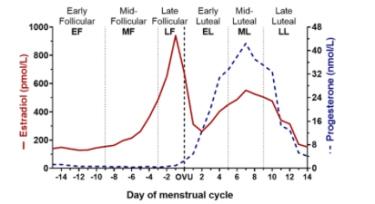
Muscle fatigue and delayed onset muscle soreness (DOMS) are caused by damage to the sarcolemma (outer membrane) of muscle cells, resulting in protein leakage and free radical attacks on the cell’s molecules. Oestrogen can assist in stopping this muscle damage due to its chemical structure. Its lipophilic trait (ability to combine with fats/lipids) allows it to insert itself into the sarcolemma and the hydroxyl groups act as proton donors to stabilise free radicals. This strengthens the sarcolemma and decreases post-exercise leakage of muscle proteins, such as creatine kinase.
Studies have shown women have lower resting creatine kinase levels and reduced post-exercise creatine kinase response compared to men, potentially due to higher levels of oestrogen. Interestingly, while the serum creatine kinase and DOMS recovery times are associated in men, they are unrelated in women. This mechanism only benefits from elevated concentrations of oestrogen, and as oestrogen concentration varies between menstrual cycle phases, this effect is likely to be menstrual phase specific.
To understand the impact of the menstrual cycle on carbohydrate utilisation we first need to understand the process that supports glucose uptake. When we eat carbohydrate, it is broken down into its most basic form which is sugars e.g glucose. Glucose is absorbed into the bloodstream which raises blood glucose levels. In response, the pancreas releases insulin. Insulin, through many reactions, signals to transactivate more Glucose Transporter Type 4 (GLUT4). At the cell surface, GLUT4 permits the facilitated
diffusion of circulating glucose down its concentration gradient into muscle and fat cells.
Oestrogen can increase GLUT4 expression and GLUT4 translocation to the plasma membrane, which is expected to enhance plasma glucose uptake. Although progesterone does not affect GLUT4 gene expression, it does reduce the GLUT4 protein content (the building blocks needed to create more GLUT4). Therefore, oestrogen expresses more GLUT4 and progesterone can repress GLUT4 creation. A comparison between menstrual cycle phases reveals that there is 2.2-fold greater skeletal muscle GLUT4 during the mid-follicular phase than luteal phase.
A meta-analysis completed by the authors suggests that despite oestrogen enhancing GLUT4 expression in specific tissues, on a whole-body level, oestrogen reduces the rate of plasma glucose uptake during exercise. Additionally, ovarian hormone effects are more notable during periods of metabolic stress or a high demand for substrates, i.e. when exercising in a fasted state.
Moreover, consuming a hormonal contraceptive for four months reduces the rate of plasma glucose uptake during exercise by up to 20% (−8.44 µmol/kg·min), even when exercising in a fed state, compared with naturally eumenorrheic women. It may be that the oral contraceptive potency is greater than the naturally cycling hormones resulting in a larger effect.
This decrease in rate of plasma glucose uptake with increased oestrogen levels could be linked to its influence on hepatic glucose production. Oestrogen suppresses gluconeogenesis (process of breaking down carbohydrate substrate into glucose) by repressing gluconeogenic enzymes, which can reduce the blood glucose levels. Considering plasma glucose uptake is reduced in the mid luteal phase, we can assume that in eumenorrheic women, oestrogen suppression of hepatic glucose production predominates.
Glycogen storage can also be influenced by ovarian hormones. Studies have found a greater ability to replace muscle glycogen stores in the mid luteal phase compared with mid follicular phase with a daily diet of 5g/kg carbohydrate. Indicating that higher oestrogen and progesterone levels can contribute to better glycogen replacement. However, the difference between menstrual phases disappears when following a high carbohydrate (8g/kg) diet for three days. Similarly, when ingesting a high carbohydrate dose (1.2 g/kg per hour) during the immediate four-hour recovery period after glycogen depleting exercise, a similar muscle glycogen repletion is achieved in all menstrual phases. This demonstrates that a high carbohydrate strategy negates the effect of hormone differences on glycogen replacement.
Menstrual cycle effects on fat utilisation
Oestrogen can promote fat oxidation through many signalling pathways resulting in 1) increased maximal activity of enzymes regulating long-chain fatty acid oxidation in the skeletal muscle, 2) increased protein content of plasma membrane fatty acid transport proteins to increase the absorption of fat molecules 3) increased expression of the transcription factor for fatty acid synthase for lipogenesis (creation of fatty acids from non-lipid sources) in the skeletal muscle 4) increased content of skeletal muscle localised lipoprotein lipase 5) redistribution of long chain fatty acids away from adipose tissue and towards skeletal muscle. Similar to carbohydrate oxidation, progesterone attenuates oestrogen’s effect, which can reduce fat oxidation.
Considering the evidence already mentioned, it is not surprising that females experience higher rates of fat oxidation when exercising fasted, compared to men. Curiously, results are less definitive when considering variation in menstrual cycle, with only some studies reporting the late follicular and mid-luteal phases have a higher rate of fat oxidation than early follicular phase during fasted exercise.
The use of a hormonal contraceptive for four months can also increase whole-body lipolysis (breakdown of triacylglycerols) by 20% during exercise, compared to eumenorrheic women. However, this is coupled with a greater rate of free fatty acid re-esterification (i.e. Fatty acids released into the bloodstream) and less plasma free fatty acids being oxidised during exercise. This also demonstrates that hormonal contraceptive use can influence exercise metabolism differently compared with naturally occurring menstrual cycles.
Greater protein catabolism occurs during the mid-luteal phase vs the early follicular phase over three days, when recreationally active women included a 60-minute cycle on day one. According to these findings, the protein requirement per day in the early follicular phase was notably less than in the mid-luteal phase (1.05 vs. 1.36 g/kg per day, respectively). From a more recent meta-analysis, the summative findings show a moderate effect of menstrual cycle phase on protein oxidation rate.
This appears to be due to a progesterone-dominant effect, as raised oestrogen levels decreased protein oxidation. Therefore, oestrogen demonstrates a protective effect on protein breakdown. The mechanism whereby progesterone upregulates and oestrogen downregulates protein breakdown remains undefined, but more quality research is required to fully determine the mechanism behind it.
Only one study has looked at the rate of muscle protein synthesis in eumenorrheic women. This study asked these women to perform unilateral leg exercises and then used a muscle biopsy to measure the uptake of protein into the muscles 24 hours later. Both legs were studied, with one acting as a control. While the exercised leg had a higher FSR (fractional protein synthesis rate) than the control leg, there was no difference between the early follicular and mid-luteal phases. This demonstrates that oestrogen has a protective effect against protein oxidation, but ovarian hormones don’t influence muscle repair and growth. .
The effect of the menstrual cycle on muscle regeneration and strength

Higher levels of oestrogen have been linked to a greater activation of satellite cells. These cells play an important part in the maintenance and repair of skeletal muscles. A study asked participants to perform unilateral leg resistance training with one-leg trained only in the follicular phase and the other leg trained only in the luteal phase for three menstrual cycles. Results found greater muscle strength gain and muscle diameter in the follicular phase trained-leg than the luteal phase trained-leg. Other studies have agreed with this observation.
This could be explained by the greater stimulation of satellite cells in the follicular phase due to the presence of oestrogen alone rather than oestrogen and progesterone in the luteal phase. It appears that progesterone inhibits oestrogen-induced satellite cell differentiation and subsequent regeneration after exercise induced muscle damage. Therefore, muscle regeneration and strengthening are mostly greater during the follicular phase when oestrogen is present alone (even in low-moderate concentrations) without progesterone.


It appears that a notable shift in whole-body substrate utilisation from fat oxidation to glucose oxidation between menstrual phase is only evident: (i) during fasted exercise (ii) mainly when exercise duration places a sufficiently high demand on endogenous energy stores (iii) at or below the exercise intensity marking the metabolic threshold after which carbohydrate utilisation predominates (iv) as such is dependent on a high relative concentration of oestrogen to progesterone in the mid luteal phase.
The mid-luteal phase seems the best time for endurance exercise or low intensity resistance loads due to key features of oestrogen modulating exercise induced muscle damage.
The mid to late luteal phase could compromise high intensity exercise efforts in a carbohydrate depleted state, as skeletal muscle glucose uptake is suppressed. Carbohydrate supplements during these phases are essential to ensuring an athlete is fueling for the work required.
Those using hormonal contraception have a reduced glucose uptake when exercising in a fasted or fed state. Therefore, female athletes using hormonal contraception should be consuming more carbohydrates than nonhormonal contraceptive users during exercise to increase circulating blood glucose to support uptake.

During the early to mid-follicular phase, glycogen storage is not as efficient, so a high carbohydrate strategy is required to ensure sufficient glycogen storage.
Although the results are not definitive, the late follicular and mid-luteal phases have a higher rate of fat oxidation than the early follicular phase when exercising in a fasted state at lower intensities. Therefore, if a female athlete wanted to improve body composition, completing lower intensity fasted exercise (<70% VO2max) in the late follicular and mid-luteal phases may be more effective than in the early follicular phase.
Protein catabolism has consistently been shown to be greater in the luteal phase at rest, therefore increasing protein intake during this phase may protect against protein breakdown.
Athletes including adjunct strength training should periodise these training sessions in the follicular phase to benefit from greater muscle strength gains owing to oestrogen activation of satellite muscle cells.




“Understanding the relationship between the menstrual cycle and ovarian hormones with muscle damage, substrate utilisation, and muscle strength is necessary to better support our female athletes. There are key takeaways from this review that can be applied to nutritional and performance strategies, to ensure that programmes are supporting fluctuations in hormones experienced by the female athletes. This can help elicit the best performance benefits.”
“However, there is a need to meticulously measure a female athlete’s changes in hormones to apply this advice correctly, which in team sports and lower budget clubs is not always possible. Additionally, there are many other factors that affect performance and nutrition associated with the menstrual cycle that should also be considered, such as mood and physical symptoms of menstruation. Therefore, ensuring practitioners have a positive and open relationship with female athletes about their menstrual cycle function is key to best understand how to support wellbeing and performance.”

OBJECTIVE
Low energy availability (LEA) occurs when energy intake is insufficient to meet biological requirements. Athletes are at greater risk of LEA due to their intense training loads, resulting in high energy expenditure. LEA forms the basis for the Female Athlete Triad and Relative Energy Deficiency in Sport (RED-S), two conditions that reflect the adverse health effects of long-term, or repeated intense periods of, inadequate energy intake.
The causes of LEA can be multifactorial. These can include social, demographic, and environmental elements, as well as biological, psychological, and behavioural components. LEA may develop unintentionally due to a lack of knowledge about nutritional needs and/or an inability to access sufficient food around training. In contrast, disordered eating and/or eating disorders, underpinned by a psychopathology can either precede or be the result of LEA.
Although stakeholders are starting to understand the health consequences associated with LEA, many athletes and coaches remain unaware. Coaches have continuous engagement with athletes, so can play a purposeful role to mitigate risks, detecting, and supporting the management of LEA. Ideally, coaches should create a supportive environment, encouraging exercise and eating behaviours that lead to performance optimisation and long-term health. However, some coaches prioritise winning, status, or financial gain at the cost of long-term athlete health and wellbeing. Studies have shown that while some coaches work with other medical professionals to support athlete health, others fail to acknowledge contributing factors that can increase the risk of LEA.
Because coaches have a significant influence on an athlete's progress, it is essential that they have a thorough understanding of LEA. To date, there has not been a review of current evidence relating to this topic. This review intends to summarise published literature related to coaches’ knowledge, attitudes/beliefs, and behaviours towards LEA in athletes. This information will be used to create future coach education/support programs which optimise athlete well-being and performance.
In this review articles studies on a coach’s knowledge, attitudes/beliefs, and/or behaviours of LEA, RED-S, Female Athlete Triad, eating disorders or disordered eating were explored. This resulted in 20 eligible studies being reviewed.
Ten studies explored coach knowledge, attitudes/beliefs, and behaviours in the context of the Female Athlete Triad, and a further 10 studies explored coach knowledge, attitudes, beliefs and/or behaviours regarding disordered eating and eating disorders. Only one studied LEA in the context of the RED-S model.
Most investigations were undertaken in the USA (n=14) with the remainder in Europe (n=4), Canada (n=1) and Singapore (n=1). Coaches sampled in the investigations included those from ‘multi-sport’ settings, gymnastics, cross-country running, athletics, dance, tennis and aesthetic/weight class activities. Coaches' experiences ranged from four months to 45 years and their age ranged from 24 to 69 years old.
Knowledge
The coaches’ knowledge was measured through questionnaires using a mixture of categorical and open-ended questions.
Five studies measuring knowledge of the Female Athlete Triad reported that >80% of participating coaches were unable to identify all components of the model or recognise common signs and symptoms. Other studies suggested a greater proportion (43–73%) of coaches working in settings with elite athletes (e.g. Division 1) were able to identify all components of the Female Athlete Triad.
The single study measuring LEA in the context of RED-S showed coaches' average knowledge score was >65%, from a total of three questions.
A further five studies assessed the coach’s knowledge of disordered eating and eating disorders, with scores ranging from 64-92%.
Menstrual cycle issues are a sign of LEA. Three studies questioned the coaches on the link between menstrual function and bone health (e.g stress fractures or osteoporosis). Findings showed that Division 1 coaches had a higher understanding (69%) than high school coaches (20–31%), indicating coaches' knowledge of the subject seemed to depend on their level/experience.
Attitudes and Beliefs
In six studies, more than 50% of coaches acknowledged that LEA could cause menstrual dysfunction. However, many coaches (19–42%) expressed little concern about the possible health consequences of those irregularities. The coaches’ willingness to talk to their athletes about menstrual function also varied. One study revealed that fewer than 20% of them discussed this subject with their athletes, while other studies found 42–72% felt confident and comfortable bringing up the topic, with female coaches being more likely to do so (34–72%) than male coaches (20–42%).
At the most elite levels (e.g. National/Division 1), coaches have demonstrated highly varied (36 to 82%) behaviours when it comes to monitoring athlete body weight composition. Moreover, some discrepancies were identified between the practices the coaches themselves follow and those that other coaches practise. For example, none of the 28 respondents in one gymnastics study reported regular weight assessment, yet 82% said that other coaches did so. Four studies implied that a substantial proportion of coaches (54-76%) stress the importance of having low body fat (“leanness”) and even agree that it is appropriate for them to provide strategies to reduce body fat and manipulate weight/physique.
Three types of coach-athlete relationships were reported that could influence the development of LEA or disordered eating/eating disorders. 'Supportive' relationships were characterised by a strong connection and open dialogue, where topics unrelated to sports performance were considered normal to discuss. 'Avoidant' relationships involved conflict between the coach and athlete, and both the coach and athlete demonstrated an aversion to disordered eating behaviours and/or LEA symptoms. Lastly, 'confrontational' approaches employed scare tactics and strict rules/targets regarding weight and/or training. This approach cultivates an inappropriate choice of language when talking about LEA-related topics to athletes.

The lack of knowledge of LEA and disordered eating in some coaches shows the importance of sport specialists (e.g nutritionists, medical team) upskilling the rest of the multi-disciplinary team with implemented strategies to overcome these challenges. This enhances the staff’s knowledge and ensures that athletes are supported with the same strategy throughout the club.

Although there is a need to target lower-level coaches to better their knowledge, attitudes, and beliefs towards LEA and disordered eating, there is a need to raise this in all coaches. This could be accomplished through sporting governing bodies, through franchise clubs, individual sport specialists running courses, or the coaches seeking out information themselves.

LEA, disordered eating, and eating disorders are most treatable when they are caught early.
Practitioners can implement a screening process to identify these symptoms and measure the risk of LEA and unhealthy eating behaviour. If an athlete is flagged as at risk, then practitioners can provide support based on their needs (e.g psychological, medical, and nutritional). This support structure can be created within a club environment or practitioners working with individual athletes.
Once again, this research shows that creating a positive, trusted, and open relationship with an athlete is integral to allowing honest and effective communication. This can ensure an athlete is best supported so that these conditions are prevented and treated quickly and thoroughly if presented.




LEA and its effects have been thoroughly researched, and this concept is well understood amongst sports nutrition practitioners. However, Morehen et al. (2016) showed that athletes, particularly in female sports clubs, are chronically under-fueling. The reasons for this are summarised well by McHaffie et al. (2022) who conducted research in the recent England Lioness’s squad. A further review shows that 6-45% of female athletes and up to 19% of athletes struggle with disordered eating or an eating disorder.
The evidence from these studies coupled with the conclusions from this review show that it is important for sports nutritionists to educate athletes and their stakeholders to help overcome LEA and unhealthy eating behaviours. This, combined with some additional support, could increase coaches' knowledge and influence their attitudes and beliefs towards body composition and weight management, menstrual cycle function, and ensuring a supportive coachathlete relationship.

The next issue will be published on the 1st of next month.
Did you like all the great content in this issue?
If so, then make sure you spread the knowledge with your friends and colleagues!
